You are using an out of date browser. It may not display this or other websites correctly.
You should upgrade or use an alternative browser.
You should upgrade or use an alternative browser.
Lockheed Martin F-35 Lightning II Joint Strike Fighter (JSF)
- Thread starter Triton
- Start date
-
- Tags
- f-35 lockheed martin stealth usa
what_is_that
ACCESS: Restricted
- Joined
- 9 August 2023
- Messages
- 21
- Reaction score
- 26
What's the point unless USN surface ships start carrying nuclear weapons again?Now that the F-35A has been wired for special-stores I wonder if the F-35B and F-35C will be wired for them too?
What's the point unless USN surface ships start carrying nuclear weapons again?
The point is if the USN decides to start carrying nuclear-weapons again on its' surface-warships it has the aircraft available to carry them.
what_is_that
ACCESS: Restricted
- Joined
- 9 August 2023
- Messages
- 21
- Reaction score
- 26
But it’s not just like they can flick a switch and have that capability right?The point is if the USN decides to start carrying nuclear-weapons again on its' surface-warships it has the aircraft available to carry them.
Scott Kenny
ACCESS: Above Top Secret
- Joined
- 15 May 2023
- Messages
- 5,996
- Reaction score
- 4,842
At least the last one anyone has admitted to targeting in combat.(Fairly sure Santa Fe's the last submarine directly targeted in combat).
But it’s not just like they can flick a switch and have that capability right?
It's more than just a flick of a switch as far as I know, I don't know if there's dedicated wiring for a special-store (It wouldn't surprise if there is) but I do believe it involves some dedicated avionics boxes and control panel in the cockpit.
Firefinder
ACCESS: Top Secret
- Joined
- 5 October 2019
- Messages
- 789
- Reaction score
- 1,268
Honesly the hardest part in making the C nuke capable is the aerodynamics.
Which are basically the same as the A in all the ways that matter.
Making sure the stores drop cleanly and not fly up and take out the tail or wing is the hardest part, not the wiring.
So it will not shock me if the C has all the space for the needed gear set aside for just incase and can be added into a large chunk of the fleet within a month.
Which are basically the same as the A in all the ways that matter.
Making sure the stores drop cleanly and not fly up and take out the tail or wing is the hardest part, not the wiring.
So it will not shock me if the C has all the space for the needed gear set aside for just incase and can be added into a large chunk of the fleet within a month.
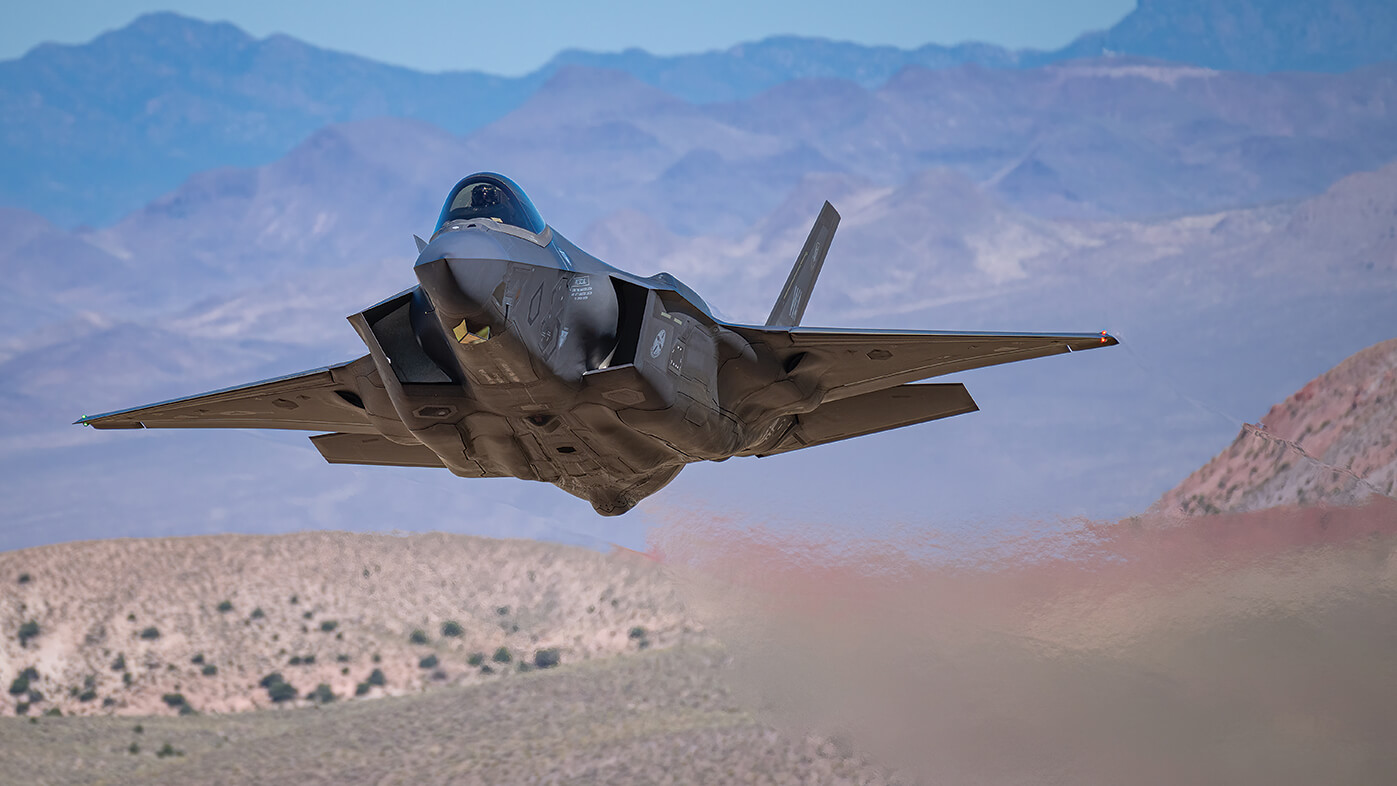
RCAF: Fifth-Gen fighter jet transformation - Skies Mag
Far more than a fighter replacement program for the CF-18 Hornet, the F-35A represents a generational capability change for the RCAF. A former ‘Hornet Baby’ and F-35 test pilot shares some key lessons.
WatcherZero
ACCESS: Secret
- Joined
- 22 May 2023
- Messages
- 435
- Reaction score
- 744
Denmark is asking around whether it can borrow F-35's for pilot training off other countries due to late deliveries.
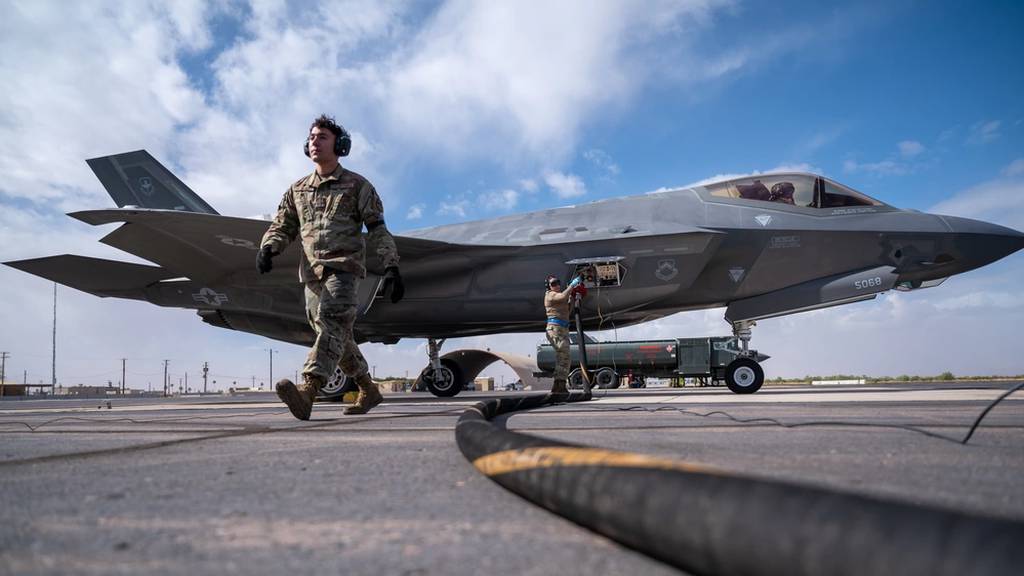
 www.defensenews.com
www.defensenews.com

F-35 delivery delays frustrate European air force upgrade plans
Client governments early in the acquisition sequence could be the first to feel the ripple effects of a snag related to technology upgrades.
Rostov-on-Don...On the surface, plenty. Remember the RN engaged ARA Santa Fe at Grytviken with AS-12 and MGs after she'd been forced to the surface. (Fairly sure Santa Fe's the last submarine directly targeted in combat).
XtraSaltee
Triple Ace
- Joined
- 18 March 2024
- Messages
- 20
- Reaction score
- 17
"Pentagon and Lockheed hope that overdue modernization dubbed Technology Refresh 3", or TR-3. It's apparently suppose to include better displays, computer memory, and processing power. which will start the process for the extensive upgrade, called Block 4, that will bring greater weapons capacity as well as improved electronic warfare and target recognition capabilities.
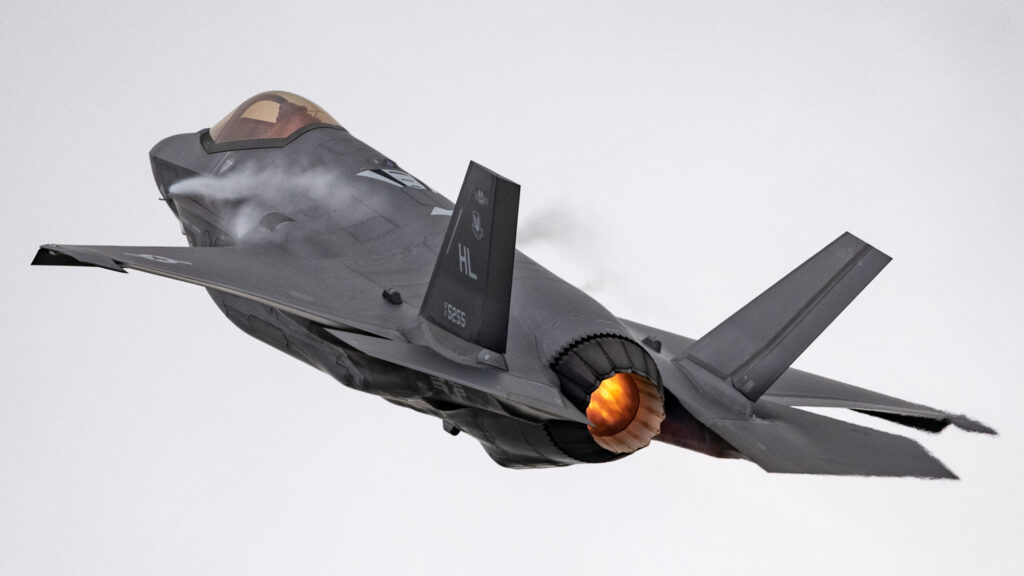
It’s official: The F-35 will not get a new engine anytime soon - Breaking Defense
After rancorous debate, a new engine for the stealth fighter was already in doubt, but legislation released by congressional appropriators today seemingly puts the issue to rest.
Colonial-Marine
UAVs are now friend, drones are the real enemy.
- Joined
- 5 October 2009
- Messages
- 1,197
- Reaction score
- 707
I'd strongly agree with you there. Considering how long designs like the F-15 and F-16 have served, everyone knows that the F-35 will be around for a very long time to come. To not make an effort to integrate what is said to be a significant improvement in engine technology and capability on such an aircraft is very shortsighted.That's rather shortsighted.
Last edited:
Scott Kenny
ACCESS: Above Top Secret
- Joined
- 15 May 2023
- Messages
- 5,996
- Reaction score
- 4,842
Not to mention getting some operational experience with the Adaptive Engines to derisk the NGAD engines...I'd strongly agree with you there. Considering how long designs like the F-15 and F-16 have served everyone knows that the F-35 will be around for a very long time to come. To not make an effort to integrate what is said to be a significant improvement in engine technology and capability on such an aircraft is very shortsighted.
Congress add some nice extra F-35A in voted bill.
Notice also the F15EX and HH-60W.
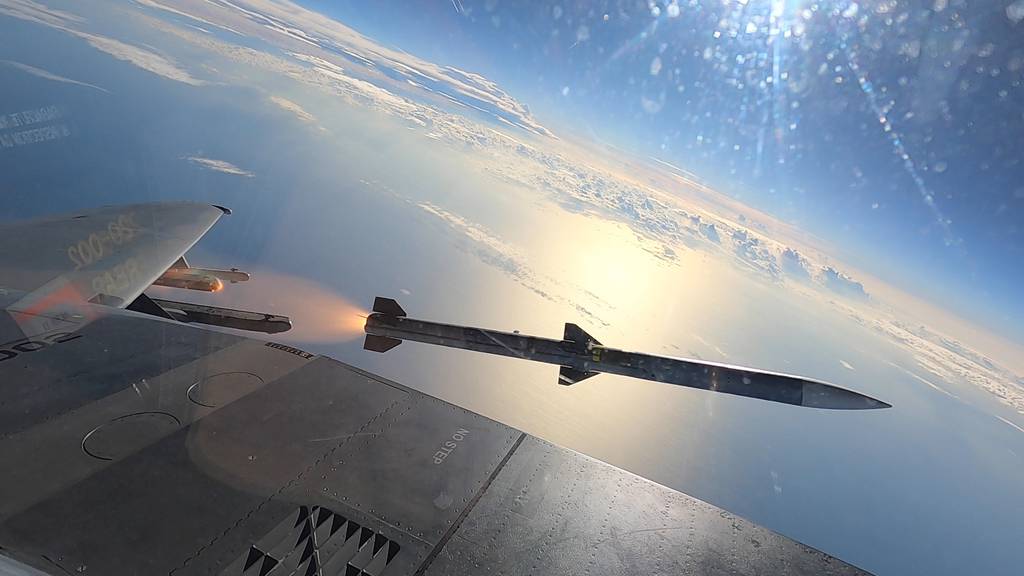
 www.defensenews.com
www.defensenews.com
Notice also the F15EX and HH-60W.

Congress passes defense spending bill after months of delays
Congress has passed an $825 billion FY24 defense spending bill, but the plan to get Ukraine military assistance across the finish line remains uncertain.
Forest Green
ACCESS: Above Top Secret
- Joined
- 11 June 2019
- Messages
- 5,093
- Reaction score
- 6,674
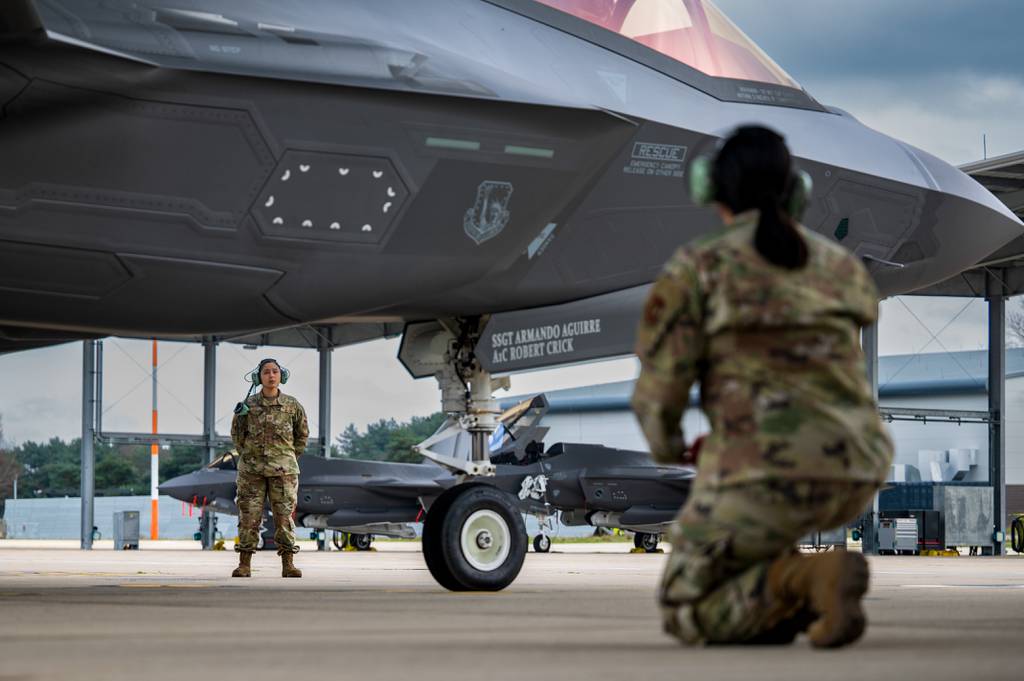
Congress offers procurement boost for F-35 jets in FY24 spending bill
The U.S. Air Force would receive enough money to buy 51 F-35As in fiscal 2024 under the compromise defense spending bill lawmakers released.
Deltafan
ACCESS: Top Secret
- Joined
- 8 May 2006
- Messages
- 1,574
- Reaction score
- 1,831
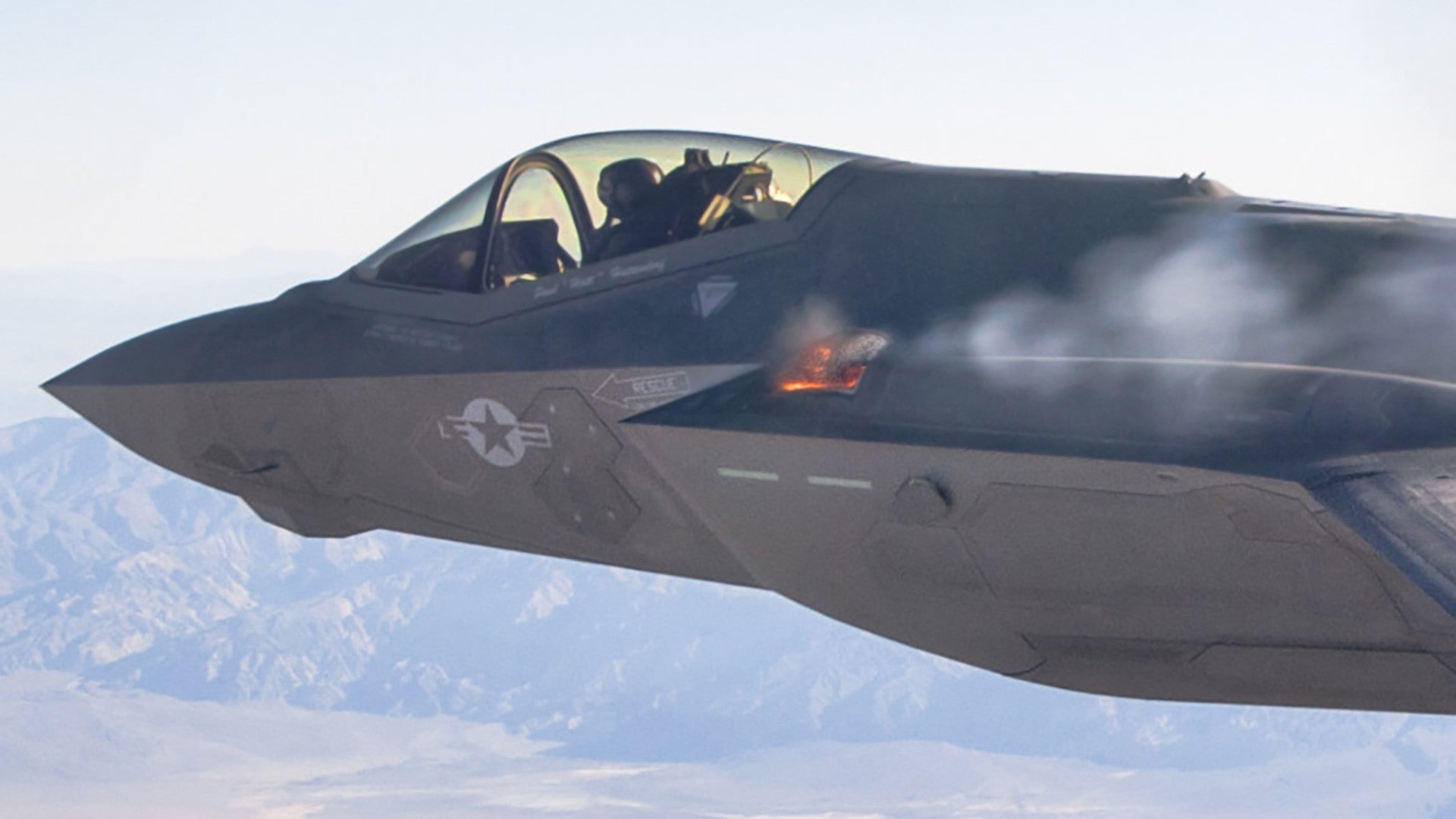
F-35A's Beleaguered 25mm Cannon Is Finally "Effective"
Accuracy and other issues have dogged the F-35A’s gun, which also have been major talking points in the debate about retiring the A-10.

F-35A's Beleaguered 25mm Cannon Is Finally "Effective"
Accuracy and other issues have dogged the F-35A’s gun, which also have been major talking points in the debate about retiring the A-10.www.twz.com
I'm not sure that replacing the A-10 with the F-35 is a good idea as the A-10 is highly specialised aircraft flying a specialised mission, it can take combat damage that would cripple or destroy most other aircraft.
- Joined
- 3 June 2011
- Messages
- 17,332
- Reaction score
- 9,069
That could be the USN's motto.That's rather shortsighted.
People need to get over this fixation that the A-10 is some sort of wonder weapon/flying tank. Sure, it might allow a pilot to get back but I think you will find that the aircraft isn't in any sort of state to be returned to operations.I'm not sure that replacing the A-10 with the F-35 is a good idea as the A-10 is highly specialised aircraft flying a specialised mission, it can take combat damage that would cripple or destroy most other aircraft.

Congress offers procurement boost for F-35 jets in FY24 spending bill
The U.S. Air Force would receive enough money to buy 51 F-35As in fiscal 2024 under the compromise defense spending bill lawmakers released.
Scott Kenny
ACCESS: Above Top Secret
- Joined
- 15 May 2023
- Messages
- 5,996
- Reaction score
- 4,842
Depending on where it took damage, not really. The rudders, elevators, and horizontal and vertical stabilizers are all symmetrical, you can flip them over to use on either side. I think the aileron/spoilers are symmetrical as well. Engines are the same on both sides, too.People need to get over this fixation that the A-10 is some sort of wonder weapon/flying tank. Sure, it might allow a pilot to get back but I think you will find that the aircraft isn't in any sort of state to be returned to operations.
Take a SAM blast to the tail and you replace the tail surfaces and have the mechs repair the damaged ones to put on the next plane. Takes a couple hours to remove, replace, and rerig the controls (edit: and most of that time is rerigging the controls, remove and replace the tail is not many bolts each)
Last edited:
Forest Green
ACCESS: Above Top Secret
- Joined
- 11 June 2019
- Messages
- 5,093
- Reaction score
- 6,674
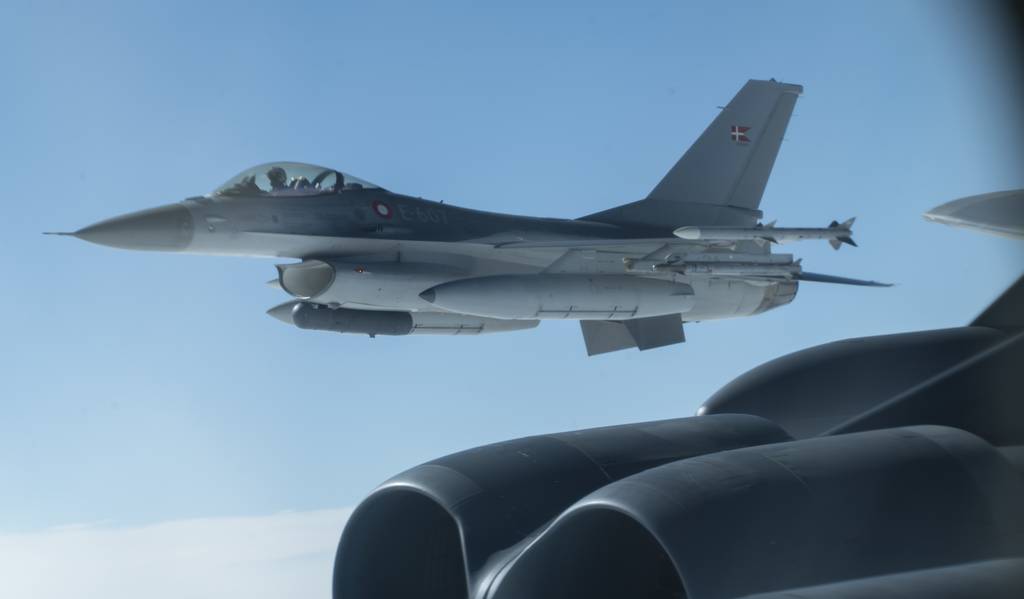
Argentina to buy surplus F-16 jets from Denmark
Denmark is replacing its F-16 fleet with new F-35 jets, both of which are made by the American company Lockheed Martin.
kaiserd
I really should change my personal text
- Joined
- 25 October 2013
- Messages
- 1,665
- Reaction score
- 1,616
Depending on where it took damage, not really. The rudders, elevators, and horizontal and vertical stabilizers are all symmetrical, you can flip them over to use on either side. I think the aileron/spoilers are symmetrical as well. Engines are the same on both sides, too.
Take a SAM blast to the tail and you replace the tail surfaces and have the mechs repair the damaged ones to put on the next plane. Takes a couple hours to remove, replace, and rerig the controls (edit: and most of that time is rerigging the controls, remove and replace the tail is not many bolts each)
Given the evolution of relevant near-peer-power low altitude air defence systems the A-10 probably doesn’t survive almost any hits anymore. Against such systems/ threats you only survive by not being targeted and by not being hit (the F-35 to a tee).
And/ or by only using more disposable/ expendable system (drones, stand-off weapons delivered from outside their threat envelope etc.).
And anyway this “combat damage” argument is almost entirely moot given that the A-10 is now almost never used in the low altitude role anymore and almost always operates from medium altitude using its Sniper targeting pod (in that sense just a slower more vulnerable version of what the likes of the F-16 and F-35 are doing.)
However this line of argument appears to be another example of attempts to justify the A-10 by referencing out of date arguments that probably weren’t even entirely true or valid for yesterday’s wars. At this stage the A-10 really does appear to be at least as much a cult as a weapon system in these type of discussions.
In current and future conflicts the A-10 is much less, not more, survivable than the likes of the F-16, F-15, F-35 etc.
Even in lower intensity conflicts going forward no one is ever going to be allowed to risk A-10s and their pilots with tactics that would make their theoretical battle damage resistance of any real significance.
Scott Kenny
ACCESS: Above Top Secret
- Joined
- 15 May 2023
- Messages
- 5,996
- Reaction score
- 4,842
That is an entirely different argument than the one I addressed.Given the evolution of relevant near-peer-power low altitude air defence systems the A-10 probably doesn’t survive almost any hits anymore. Against such systems/ threats you only survive by not being targeted and by not being hit (the F-35 to a tee).
And/ or by only using more disposable/ expendable system (drones, stand-off weapons delivered from outside their threat envelope etc.).
And anyway this “combat damage” argument is almost entirely moot given that the A-10 is now almost never used in the low altitude role anymore and almost always operates from medium altitude using its Sniper targeting pod (in that sense just a slower more vulnerable version of what the likes of the F-16 and F-35 are doing.)
However this line of argument appears to be another example of attempts to justify the A-10 by referencing out of date arguments that probably weren’t even entirely true or valid for yesterday’s wars. At this stage the A-10 really does appear to be at least as much a cult as a weapon system in these type of discussions.
In current and future conflicts the A-10 is much less, not more, survivable than the likes of the F-16, F-15, F-35 etc.
Even in lower intensity conflicts going forward no one is ever going to be allowed to risk A-10s and their pilots with tactics that would make their theoretical battle damage resistance of any real significance.
I was responding to a claim that a damaged A10 could not be returned to service.
Firefinder
ACCESS: Top Secret
- Joined
- 5 October 2019
- Messages
- 789
- Reaction score
- 1,268
By all the Rights the F35A will be a fine replacement for the A10. It literally has all the features you want. Stealth, decent payload, solid range, SOME ACTUAL FREAKING SENSORS.
However comma...
The question is will the pilots keep up the attacker work culture and not go... Its a fighter it does FIGHTER THINGS RED BARON HOOO!
Like they done every other time an A craft gets replace with an F. Their skills doing attacker work noticably drop. And we just got off of ten years of the easiest CAS work possible that not training and working the F15s and F16s somehow miss with guided weapons and the A10s one shot in the worse weather. Thats leaves a massive impact on a reputation for us ground pounders.
It all the Air Force to ensure that the squadrons keep it up and not slack off to do funner less likely to happen or last if it does Fighter Jock stuff.
However comma...
The question is will the pilots keep up the attacker work culture and not go... Its a fighter it does FIGHTER THINGS RED BARON HOOO!
Like they done every other time an A craft gets replace with an F. Their skills doing attacker work noticably drop. And we just got off of ten years of the easiest CAS work possible that not training and working the F15s and F16s somehow miss with guided weapons and the A10s one shot in the worse weather. Thats leaves a massive impact on a reputation for us ground pounders.
It all the Air Force to ensure that the squadrons keep it up and not slack off to do funner less likely to happen or last if it does Fighter Jock stuff.
Scott Kenny
ACCESS: Above Top Secret
- Joined
- 15 May 2023
- Messages
- 5,996
- Reaction score
- 4,842
That's why I think that either the USAF needs to make a LO-shaped but minimal RAM treatment A-10 replacement or give up and let the Army fly the CAS missions while USAF flies BAI.By all the Rights the F35A will be a fine replacement for the A10. It literally has all the features you want. Stealth, decent payload, solid range, SOME ACTUAL FREAKING SENSORS.
However comma...
The question is will the pilots keep up the attacker work culture and not go... Its a fighter it does FIGHTER THINGS RED BARON HOOO!
Like they done every other time an A craft gets replace with an F. Their skills doing attacker work noticably drop. And we just got off of ten years of the easiest CAS work possible that not training and working the F15s and F16s somehow miss with guided weapons and the A10s one shot in the worse weather. Thats leaves a massive impact on a reputation for us ground pounders.
It all the Air Force to ensure that the squadrons keep it up and not slack off to do funner less likely to happen or last if it does Fighter Jock stuff.
This gets into what the Army ends up buying to escort the V280s with. I'm assuming a tilt-rotor here, which is going to be a nightmare to stealth.
Forest Green
ACCESS: Above Top Secret
- Joined
- 11 June 2019
- Messages
- 5,093
- Reaction score
- 6,674
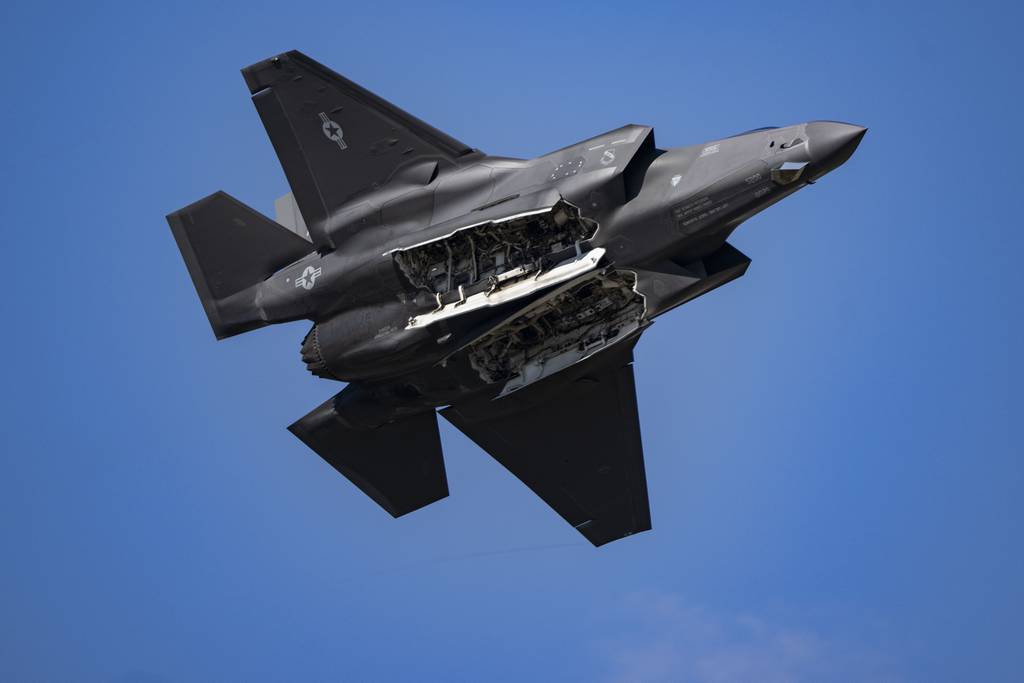
National Guard wish list would restore fighters cut from 2025 budget
The Air Force cut its planned F-35 and F-15EX purchases in 2025 by six apiece due to budgetary constraints, as well as delays to F-35 upgrades.
View: https://x.com/Doha104p3/status/1773812182532214821?s=20
Last edited:
WatcherZero
ACCESS: Secret
- Joined
- 22 May 2023
- Messages
- 435
- Reaction score
- 744
After four years the inert gas system in the A model is finally fixed and it can join its B and C brothers in flying within 25 miles of lightning.
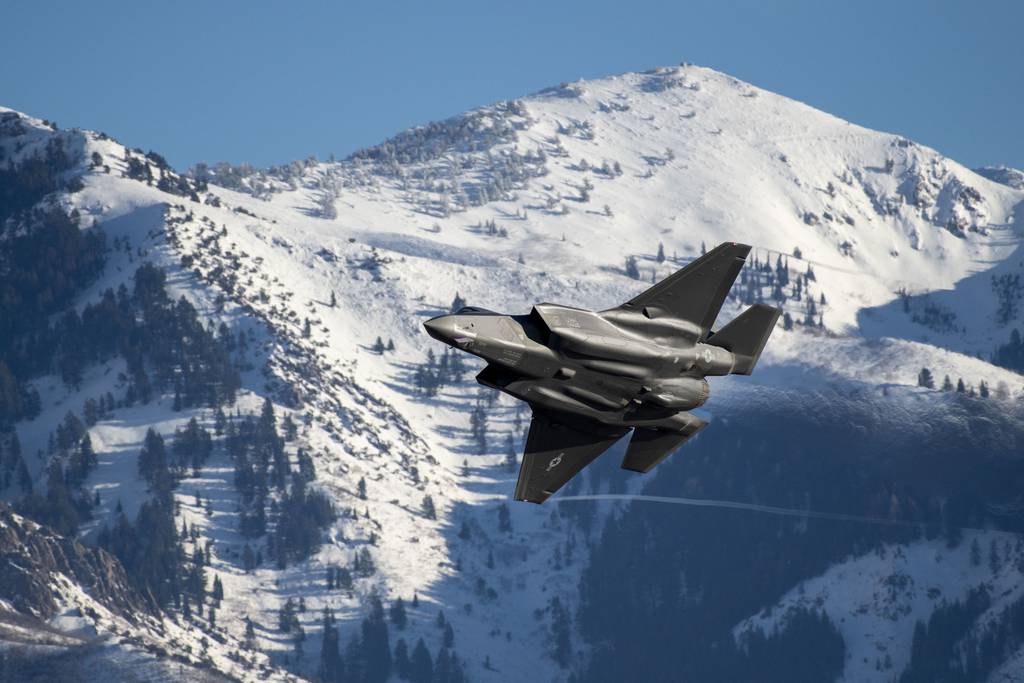
 www.defensenews.com
www.defensenews.com

F-35A Lightning cleared to fly in lightning for first time in 4 years
The Lightning II can once again fly in lightning.
I wonder how those costs compare to the Gripen, since that is considered to be the Gripen's strong point.
National Guard wish list would restore fighters cut from 2025 budget
The Air Force cut its planned F-35 and F-15EX purchases in 2025 by six apiece due to budgetary constraints, as well as delays to F-35 upgrades.www.defensenews.com
View: https://x.com/Doha104p3/status/1773812182532214821?s=20
Scott Kenny
ACCESS: Above Top Secret
- Joined
- 15 May 2023
- Messages
- 5,996
- Reaction score
- 4,842
Gripen burns a lot less fuel, since it's running on a single F414(404?) instead of that monster F135.I wonder how those costs compare to the Gripen, since that is considered to be the Gripen's strong point.
I suspect that the rest of the operations costs are comparable.
The reimbursable cost is basically just fuel and spares. It excludes contractor sustainment and support costs, which is where I suspect the F-35 is much more expensive than older types. Also older aircraft may be going through more spares as they age, relative to a brand new aircraft.I wonder how those costs compare to the Gripen, since that is considered to be the Gripen's strong point.
Scott Kenny
ACCESS: Above Top Secret
- Joined
- 15 May 2023
- Messages
- 5,996
- Reaction score
- 4,842
Right, but that tends to mean "oh, this box tested bad, so we're going to swap it for a new one (and send the bad box to the contractor to fix)." Line Replacement Units.Keep in mind that the JAS-39 is designed to operate in austere conditions being serviced by conscripts.
Which is IIRC the same general repair philosophy as the F-35.
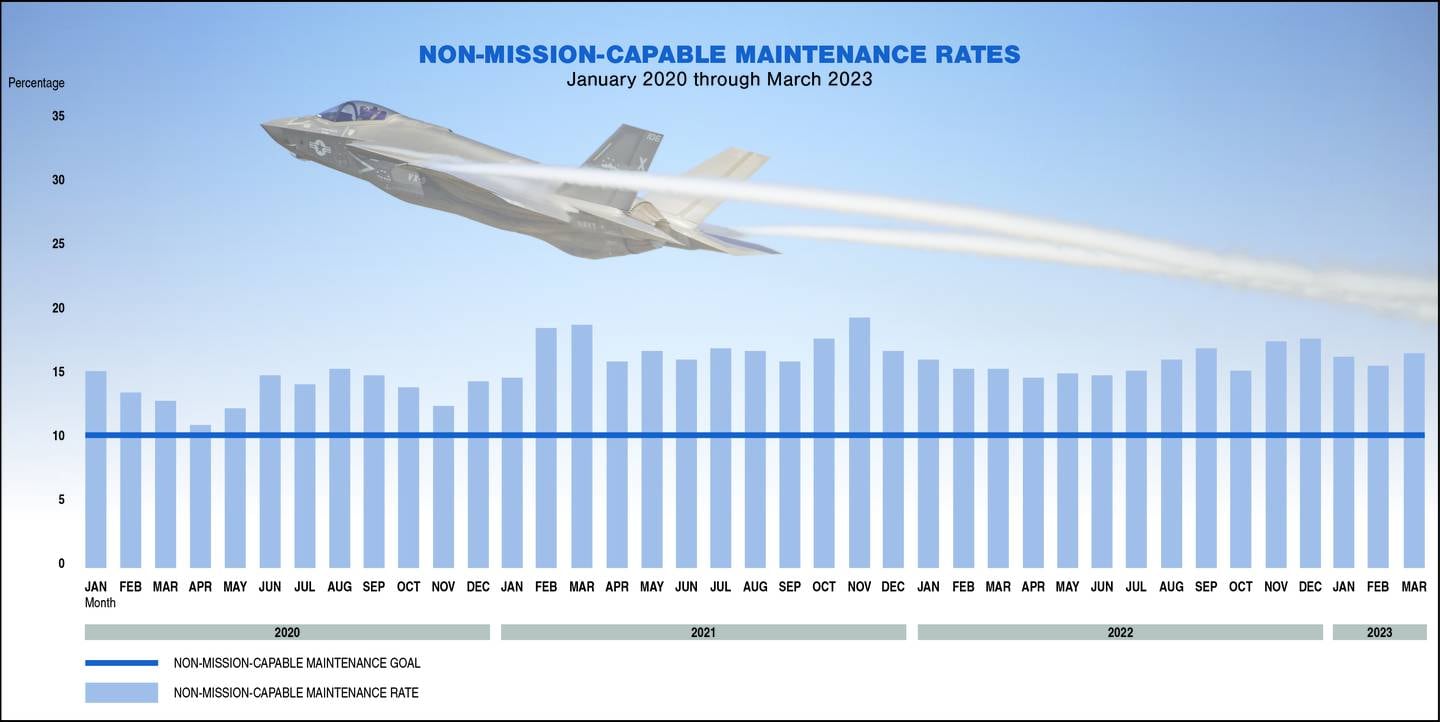
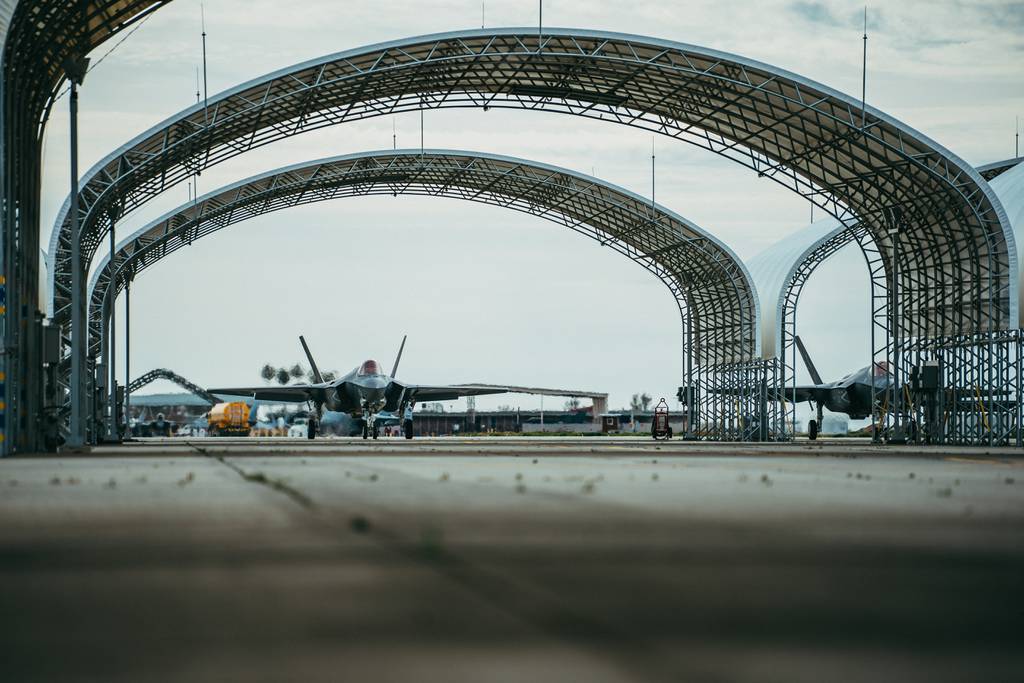
Seeking to make F-35s ready for war, maintainers think outside the box
As the F-35C fleet expands at Naval Air Station Lemoore, the service and a government oversight group worry the jets aren’t available for missions enough.
Colonial-Marine
UAVs are now friend, drones are the real enemy.
- Joined
- 5 October 2009
- Messages
- 1,197
- Reaction score
- 707
I find this an interesting question to consider. The Navy's F/A-18 was originally intended to come in two variants. The A-18 would replace the remaining A-4s and A-7s, while the F-18 would replace remaining F-4s and supplement the F-14. Improvements in computing meant one variant could carry all of the avionics necessary to both roles. But from my understanding prior to this time there had been a distinct separation between the attack and fighter pilot "community". So how much would the ability to perform the attack mission have suffered from the merger of the two? Pilots who would formerly be specialized in ground attack would now be expected to be equally adept in air-to-air combat and that requires a lot of training that isn't relevant to dropping bombs. Did the same thing occur when the A-6 Intruder was finally retired and their role taken over by the Super Hornet?Like they done every other time an A craft gets replace with an F. Their skills doing attacker work noticably drop. And we just got off of ten years of the easiest CAS work possible that not training and working the F15s and F16s somehow miss with guided weapons and the A10s one shot in the worse weather. Thats leaves a massive impact on a reputation for us ground pounders.
The Air Force never had that same love of specialized attack aircraft, instead preferring fighter-bombers that were more oriented to strike/interdiction missions. Despite this the A-10 and to some extent the A-7 still meant a community of pilots for those aircraft who would primarily be focused on the task of close air support. Advances in precision guided weapons and sensors have changed many things but I'm sure there is still a great use for pilots well experienced in working with FACs and other elements on the ground in direct contact with the enemy. Even if there is no dedicated successor to the A-10 I think it might make sense to have some squadrons who are more concentrated on what we'd consider "attack" missions despite flying a multi-role fighter like the F-35.
F-35 Users Talk Capabilities, Deterrence in Europe
F-35 operators have been touting how the aircraft is strengthening allied deterrence in Europe, where allies face threats not seen in a generation.
BlackBat242
OK, I changed my personal text ;)
- Joined
- 10 April 2013
- Messages
- 776
- Reaction score
- 1,903
The USN and USMC currently conduct combined air-air and air-ground training for its F/A-18 and F-35 pilots.I find this an interesting question to consider. The Navy's F/A-18 was originally intended to come in two variants. The A-18 would replace the remaining A-4s and A-7s, while the F-18 would replace remaining F-4s and supplement the F-14. Improvements in computing meant one variant could carry all of the avionics necessary to both roles. But from my understanding prior to this time there had been a distinct separation between the attack and fighter pilot "community". So how much would the ability to perform the attack mission have suffered from the merger of the two? Pilots who would formerly be specialized in ground attack would now be expected to be equally adept in air-to-air combat and that requires a lot of training that isn't relevant to dropping bombs. Did the same thing occur when the A-6 Intruder was finally retired and their role taken over by the Super Hornet?
The Navy relocated its Navy Fighter Weapons School, or TOPGUN, from NAS Miramar to NAS Fallon in 1996, following the transfer of NAS Miramar to the Marine Corps and its redesignation as MCAS Miramar. This move resulted in the construction of a new ramp, hangars and academic buildings. The new command, the Naval Strike and Air Warfare Center (NSAWC), was established on 11 July 1996 and was a unification of TOPGUN, Strike University (Strike U), the Naval Strike Warfare Center, and TOPDOME, the Carrier Airborne Early Warning Weapons School. In addition to transferring the NSAWC squadron, a Navy Reserve adversary squadron, Fighter Squadron Composite THIRTEEN (VFC-13), the "Saints," was also permanently relocated from its former base at NAS Miramar to NAS Fallon.
Similar threads
-
Canada Future fighter capability project (ex-Next Generation Fighter Capability)
- Started by aam641
- Replies: 210
-
-
New Canadian Prime Minister committed to withdrawing from F-35 program
- Started by Triton
- Replies: 53
-
-
Lockheed Martin F-16 Fighting Falcon Developments
- Started by seruriermarshal
- Replies: 468
